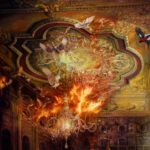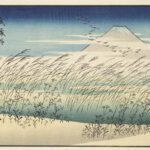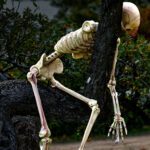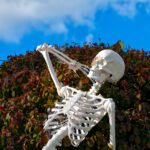LAWRENCE RUSS: Soul, Art, and Society
Archives: The Spirit and Reality
Romancing the Stone (and the Sun and the River and. . . .)

. . . Zen classics say that the world after satori is, in some ways, just the same as the world before satori — and yet, everything’s different. My connection to the Devon Bridge is positive and intimate, but people, including artists, aren’t taught to recognize that relationship, or what to call it. It goes beyond common education and beyond the terms and habits of photographic society.
Visionary “Correspondences”

. . . That is what opens up, in immersive fashion, in mystical experience: a sense that one is experiencing not some kind of glorious hyper-illusion, but rather the universe as it really is, when the doors of our perception are opened. And it’s that manner of vision that the greatest artists to try to evoke or manifest by their art, in works such as “Pepper No. 30” or Wynn Bullock’s “galactic” “Tidepool, Point Lobos” or Olivier Messiaen’s Lightning over the Beyond or Shakespeare’s The Tempest. And it’s central to what I pursue in my own art, in photos like “The Window Is at Your Feet,” “Ritual,” “Grass of the Midnight Sea,” “The Tree of Unsleeping Surveillance,” “Uprooted,” the “Marion” images, most of the works throughout my portfolios.
The Word “Spirit” Means Wind or Breath, as in Respiration, or Inspiration

Intellect by itself (not that it ever really is a function by itself) is not the only way, and not the best way, that we navigate reality, that we determine what is valuable or decide what action is best. Within what I’ve called the higher function, there is a capacity to sense non-conceptual, experienced resemblances, affinities, correspondences, a capacity like what we call intuition, but more than intuition. I’ve already written a bit about this in earlier posts (in July through October of 2011 – you’ll find a timeline in the column to the right of this post). But now I don’t want to try to discuss it, but rather to give you a related line of illustrations from my life.
It Isn’t Intellect That Sees through the Matrix That Intellect Builds

The faculty that we call intellect is good for figuring out how to transport water uphill from the river to our hut. It can do astonishing things. It’s pretty useless, however, in disclosing the satisfactions of tasting that water, swimming in it, watching its ever-changing motions and reflections, hearing it as rain on a roof or waves on a beach. . . .
Happy October 31! with Skeletons and John Keats

Just last week, I passed by a place, a remarkable display, that became the subject for a portfolio that you can see now on my photo website: “The Mansion at 13 Skeleton Drive.” https://lawrenceruss.com/index/G0000cX1diIbKkuA
A Surprise Communion across Continents, Classes, Centuries, and Cultures

. . .In dejection from all the awful and discouraging news about reactionary political victories, rampant viral sub-variants, catastrophic droughts, and increasing violence (as well as, for me, unhappy views about my own self), I found myself doing something that I’ve done on occasion over the years, especially under stress: I was hand-writing, long past midnight, a list of my favorite artists and mystical writers. That exercise can calm and comfort me. not just as an obsessive-compulsive ritual, but as a reminder of real treasures that I’ve been given, for inspiration and illumination.
The Self behind the Self – Juan Ramon Jimenez and Jim Carrey (yes, That Jim Carrey)

In certain of these posts, I’ve put together two stories or quotes that go at one thing from different directions, or whose common ground isn’t obvious on the surface, aiming to spark for you some realization that can’t just be given or explained. This time, the two sets of words that I’ve joined come from two seemingly-almost-comically-different sources. The first is a poem by Juan Ramon Jimenez, the Spanish poet who won the 1956 Nobel Prize for Literature and was a leading figure in what is sometimes called (with good reasons, like the writing of his kinsmen Antonio Machado and Lorca). The second set of words is from a speech by the American comic actor Jim Carrey. Jimenez may not have had the same kind of extremely zany humor that Carrey has shown in his movie and TV career, but Jimenez was anything but a stiff. One of his most wonderful books is a work of prose, Platero y Yo (Platero and I). Platero was his donkey.
Poetic Photography and an Invitation to Fall in Love

In going through some boxes of my books, I unearthed a couple of treasures that I hadn’t seen in oh-too-many years. (Too few shelves, too little time!) One of them, called Dialogue with Photography, is a collection of interviews with master photographers. . . The book is filled with rareties and realities. When Imogen Cunningham is asked if Edward Weston ever bought one of her prints, she replies that he never had enough money to buy anyone’s work. In this and later posts, I’ll share with you some passages that I like especially, beginning with this from the wonderful Robert Doisneau. . . .
“The Friend Who May Not Seem a Friend” – The Cat and the Fire, Post 3 of 3

Fire has often been not just a symbol of the holy Spirit, but its embodiment. . . Even fewer people will know what faith and fire lay behind the phrase “Chariot of fire.” It refers to certain events concerning the prophet Elisha, told in 2 Kings 6:8-17.
